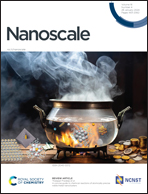A tuned triboelectric nanogenerator using a magnetic liquid for low-frequency vibration energy harvesting
Abstract
Wireless sensor networks have developed quickly in recent years, and the use of self-powered technology to replace traditional external power sources to power sensor nodes has become an urgent problem that needs to be solved. As an entirely novel type of self-powered technology, the triboelectric nanogenerator (TENG) has attracted widespread attention, but the inability to achieve adaptive adjustment based on the vibration environment has restricted the development of TENGs. Here, a magnetic liquid triboelectric nanogenerator (ML-TENG) is designed to harvest vibration energy to power sensing nodes, and ML-TENG tuning is achieved using a magnetic liquid to adapt to different vibration environments. The electrical performance of the ML-TENG was investigated by theoretical, experimental, and numerical research. According to the results, the developed ML-TENG responds well to low-frequency vibration, and the instantaneous power is up to 5.40 nW. The tuning function is achieved by adjusting the magnetic field, and the natural frequency can be adjusted between 6.6 Hz and 7.6 Hz. The strong linear connection between the output voltage of the ML-TENG and the external environment's vibration amplitude promotes the monitoring of the vibration environment and lays the groundwork for the creation of wireless sensor networks.



 Please wait while we load your content...
Please wait while we load your content...